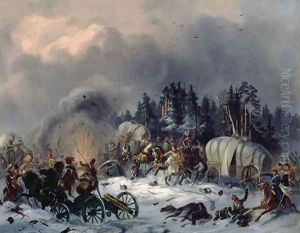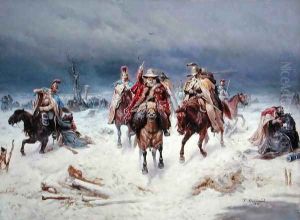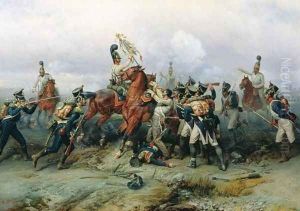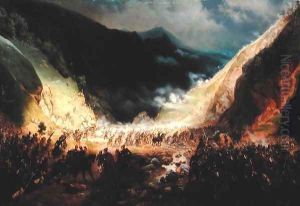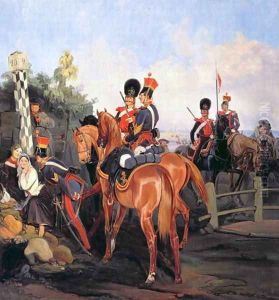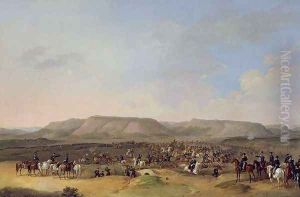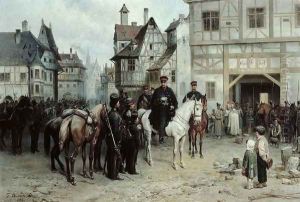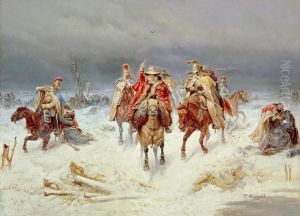Bogdan Willewalde Paintings
Bogdan (Pavel) Pavlovich Willewalde was a distinguished Russian artist and academic, born on January 12, 1818, in Pavlovsk, near Saint Petersburg, Russia. Known for his masterful military and battle scenes, Willewalde's artistic journey began under the tutelage of his father, Pavel Stepanovich Willewalde, who was also a painter. His talent and passion for art led him to the Imperial Academy of Arts in Saint Petersburg, where he studied under the guidance of renowned artists such as Karl Briullov and Alexander Sauerweid. Willewalde's dedication and skill earned him several awards during his time at the academy, setting the stage for a prolific career.
After graduating from the academy, Willewalde quickly gained recognition for his work. He became particularly well-known for his depictions of military life and historical battles, capturing the Russian military's valor and the tumultuous events of his time with remarkable accuracy and detail. His works not only served as artistic achievements but also as historical documents, offering insights into military uniforms, tactics, and the atmosphere of the 19th-century battlefield.
Willewalde's contributions to Russian art were not limited to his paintings. In 1856, he was appointed professor at the Imperial Academy of Arts, a position he held with distinction until his retirement in 1887. Throughout his tenure, he educated and influenced a new generation of Russian artists, leaving a lasting impact on the country's artistic landscape.
Beyond the classroom, Willewalde was actively involved in several artistic societies and projects, contributing to the development of Russian art and culture. His works were exhibited widely, both in Russia and internationally, earning him recognition and accolades. In recognition of his service and contributions to Russian art, Willewalde was awarded numerous honors, including the title of Academician and orders from the Russian Empire.
Bogdan Willewalde passed away on February 6, 1903, in Saint Petersburg. His legacy endures through his vast body of work, which continues to be celebrated for its artistic merit and historical significance. Today, his paintings can be found in museums and private collections around the world, testament to his enduring influence on the art of military and historical painting.
